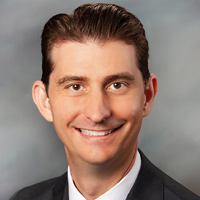
It’s tax time again!
While the tax man is at the top of many people’s minds during this time of year, there’s really nothing most people can do about their 2023 tax bill at this point, outside of making deductible IRA or HSA contributions, if eligible. For the around 70% of taxpayers who claim the standard deduction, preparing their tax return is just a matter of tallying up the score from 2023’s activities.
The remaining taxpayers who itemize deductions are likely digging around in the sofa for all the receipts they can find.
The fact, is most taxpayers don’t have a proactive plan that encompasses both current and future tax returns. And it shouldn’t be just about paying as little as possible each year. True tax planning requires longer-term thinking to ensure that the taxes paid over a lifetime are as well managed as they can be. As advisors, we are in a good position to assist.
‘A Pay Raise Rather Than a Year-end Bonus’
Most working taxpayers who only receive W-2 income have little control over the total amount of tax due each year, but they can still control when they pay the taxes. For instance, too many consumers are enamored with tax refunds. The advertising campaigns of the discount tax-prep industry flood the airwaves with hooks like “We guarantee to get you the biggest refund!” A large refund usually just indicates that too much money was withheld from the paycheck throughout the year.
Good cashflow planning includes looking at a client’s pay stubs. Advising clients who are accustomed to getting large tax refunds to lower tax withholding is simple — and it will mean more money in each paycheck. I tell these clients to think of it as getting a pay raise, rather than a year-end bonus.
More take-home pay throughout the year makes budgeting easier and can have a big impact on things like paying off credit card balances sooner, rather than accruing needless interest charges waiting on the tax refund to pay the cards off.
When a Roth Switch Works
Another way for working taxpayers to lower a large refund is to switch from traditional to Roth 401(k) contributions. This has the opposite effect of the above strategy and could lower take-home pay as well as the tax refund. It’s a great example of a strategy that has the taxpayer sign up to pay more taxes today, on purpose. Then, in the years to come, they’ll potentially reap much larger benefits: tax-free growth and withdrawals.
Unlike during the working years, some retired folks have almost total control over how much tax they pay each year. People who retire early and hold off on claiming Social Security are among them. Some early retirees who have a good amount invested in after-tax and Roth accounts can be in a position to live comfortably off their investments and pay virtually no income tax for a number of years.
Bucket Bungling
However, this isn’t always the best idea. Sure, a tax bill near $0 in a given year sounds pretty great, but at what long-term cost?
I recently spoke with some folks who are about to retire in their early 60s. Their portfolio is spread out well over after-tax, Roth and pre-tax buckets. They are looking at Affordable Care Act (ACA) healthcare plans to bridge the gap for a few years between employer insurance and Medicare. They pointed out to me that by taking portfolio withdrawals from their after-tax and Roth accounts, the resulting taxable income would qualify them for a 100% premium tax credit on their ACA policy.
In other words, very low taxes and free health insurance for a few years! I However, I advised against this strategy. It would come very close to depleting both the Roth and after-tax balances for the clients, leaving them with only the pre-tax bucket for the remainder of their lives.
It’s unwise to drain after-tax accounts down to nothing in exchange for a few years of low-to-no tax. These accounts are valuable tools throughout life. And for retirees, once that money is spent, it’s never coming back.
For example, a bucket of after-tax money might come in very handy a few years down the road when it’s time to go on Medicare. Rather than being able to withdraw from after-tax accounts to keep income down, taxpayers might find themselves in the third IRMAA bracket for the rest of their lives because the only portfolio income source they have is pre-tax retirement accounts.
Don’t Miss the Point
I believe the same goes for Roth accounts. For many, this money ought to be the last money they ever spend. While having a tax-free bucket to dip into along the way is certainly useful, over-utilizing Roth withdrawals just to achieve a few no-income-tax years misses the whole point of a Roth, which is to allow the funds to grow tax free for as long as possible.
The retirees ultimately decided to pull a good portion of their portfolio cash need from the pre-tax bucket. This allowed them to create some taxable income on purpose while still qualifying for a reduced premium tax credit and maintaining the potential longevity of their after-tax and Roth balances. This leaves them with more options later in life and reduces future required minimum distributions (RMDs).
By paying a little bit of tax today, they are potentially avoiding having to pay a lot of tax in future years.
The Roth conversion strategy is also a possibility for a similarly situated couple with low taxable income in early retirement. Filing up the lower tax brackets with Roth conversions is signing up to pay tax you would otherwise not have to pay today to avoid potentially paying more tax on the same dollars in the future.
And that is the goal of tax planning: Paying the least amount possible over a lifetime, which often means paying more than you absolutely must in some years.
DJ Hunt, CFP is a fee-only financial advisor with Moisand Fitzgerald Tamayo, LLC. in Melbourne, Florida. His clients include working professionals, business owners and retirees. DJ can be reached at dj@moisandfitzgerald.com.







